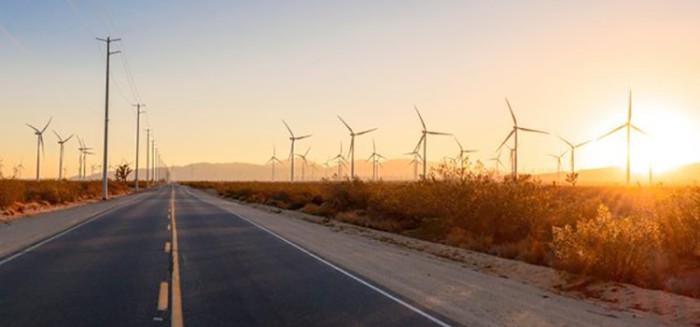DOE Grid Study Highlights Wind’s Benefits, Need for Transmission
 | Isak Kvam, Communications / Policy Associate |

 | Isak Kvam, Communications / Policy Associate |
The long-anticipated Department of Energy electricity grid reliability study finally came out and addressed how to best ensure a reliable power source for American families and businesses. A few key insights from the report highlight that wind energy makes the electric grid more reliable, and that additional investment in transmission lines is essential to unlocking more renewables across the nation.
Wind provides important grid services like voltage control and frequency regulation, which help grid operators ride through disturbances better than any other fuel source. That increases resilience, helping the grid bounce back from disruptions like cyberattacks and storms.
Wind energy is fuel-free and needs no cooling water, unlike fossil plants, so grid operators consider wind energy to be a resilient resource. Wind also provides a lot of electricity during periods of extreme weather, when other electricity sources have struggled in the past. In fact, during the polar vortex of 2014, wind energy saved Mid-Atlantic and Great Lakes states more than $1 billion in just two days. Thanks to wind energy’s stable price and high output during the vortex, wind kept electricity flowing while other power plants experienced unexpected outages and higher prices.
Wind energy’s reliability and resiliency benefits are keeping the lights on for a lower price, but more transmission is key to maximizing those benefits.
The DOE study agrees with grid operators and other experts that investing in transmission infrastructure helps move cheaper power to reach more people, similar to how a highway system efficiently moves products to market. The report states “[t]ransmission investments provide an array of benefits that include providing reliable electricity service to customers, relieving congestion, facilitating robust wholesale market competition, enabling a diverse and changing portfolio, and mitigating damage and limiting customer outages (resilience) during adverse conditions.” Transmission projects also help deliver clean energy from rural America to areas with high energy demand, where it is needed to power homes and businesses.
Investing in transmission is a win-win: It makes the grid stronger, delivers more renewable energy, and benefits outweigh its costs. For example, the grid operator in much of the Midwest, MISO, has stated that current transmission projects will provide $13 billion to $50 billion in net benefits over the next 20 to 40 years — savings of $275 to $1,000 per person. MISO’s Multi-Value Projects, which include 17 different transmission lines, will also enable more than 41 million megawatt hours of wind energy to be delivered throughout the Midwest every year.
The DOE report hit the nail on the head that wind energy is providing real benefits for grid reliability and that transmission is crucial to magnifying these benefits. This is also good news for the American economy. This past year, wind energy eclipsed 100,000 American workers, and wind jobs are growing nine times faster than the average U.S. industry. Wind power has invested more than $143 billion in the United States over the last decade, much of the value going to rural communities that need new economic opportunity. Wind also provides jobs for workers in the struggling rust belt, with more than 500 U.S. factories now building wind-related parts. Wind energy is putting Americans to work and building a stronger, more resilient grid for tomorrow.
This blog post originally appeared in Morning Consult.